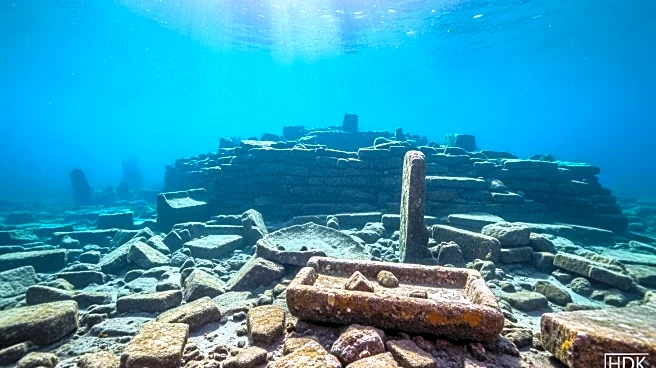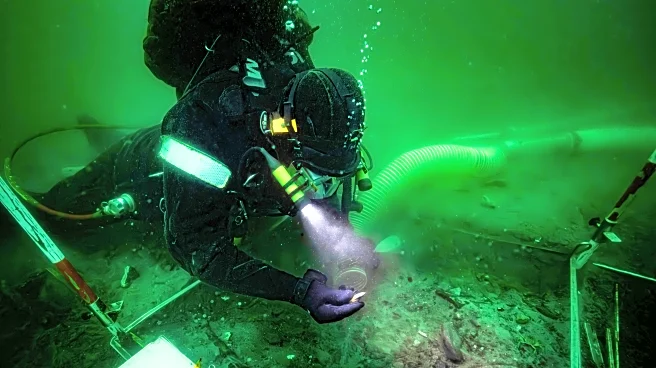What is the story about?
What's Happening?
Archaeologists in Denmark have discovered a Stone Age settlement submerged by rising sea levels over 8,500 years ago in the Bay of Aarhus. This discovery is part of a six-year, €13.2 million international project funded by the European Union, aimed at mapping parts of the seabed in the Baltic and North Seas. The project involves researchers from Denmark, the UK, and Germany, and seeks to explore sunken Northern European landscapes and uncover lost Mesolithic settlements. The settlement, located near Aarhus, Denmark's second-largest city, has yielded animal bones, stone tools, arrowheads, and other artifacts, preserved in an oxygen-free environment due to the rising sea levels after the last ice age.
Why It's Important?
The discovery of the submerged Stone Age settlement provides valuable insights into how ancient societies adapted to changing coastlines. As modern-day sea levels continue to rise due to climate change, understanding past adaptations can inform current strategies for dealing with environmental shifts. The preservation of artifacts in the submerged settlement offers a unique opportunity to study the lifestyle and survival strategies of hunter-gatherer communities during the Mesolithic era. This research could contribute to broader discussions on climate resilience and historical environmental changes.
What's Next?
Further excavations are planned in the Bay of Aarhus and off the coast of Germany, with subsequent work at two locations in the North Sea. Researchers aim to uncover more artifacts, such as harpoons and fish hooks, to build a comprehensive picture of the settlement's history. The study of submerged tree stumps using dendrochronology will continue to provide precise dating of sea level changes, enhancing understanding of historical environmental shifts.
Beyond the Headlines
The project highlights the importance of preserving underwater archaeological sites, which serve as time capsules of historical human activity. The findings may also influence policies related to offshore infrastructure development, ensuring that historical sites are protected amidst expanding sea infrastructure.
AI Generated Content
Do you find this article useful?












